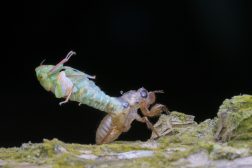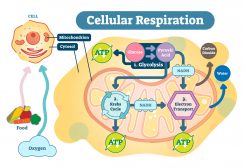Definition
noun, plural: gerontoplasts
A plastid that forms from chloroplast during senescence
Supplement
Plastids are organelles involved in the synthesis and storage of food. They are found within the cells of photosynthetic eukaryotes. In plants, plastids may develop into these forms: (1) chloroplasts, (2) chromoplasts, (3) gerontoplasts, and (4) leucoplasts.
Gerontoplasts are plastids that form from chloroplasts during senescence. Chloroplasts are plastids that have high amounts of green pigments (chlorophyll). They have a three membrane systems. These are the outer membrane, the inner membrane, and the thylakoid system. The thylakoid system is the site of the light-dependent reactions of photosynthesis. It is a stack of disks (granum) connected to another granum by stromal thylakoids.
The gerontoplast forms in a formerly green plant tissue that is undergoing senescence. During senescence of a leaf, the gerontoplast develops from chloroplast under genetic control. The gerontoplast is similar to the chromoplast in having a reduced thylakoid system and several plastoglobuli. However, it is unable to divide. The gerontoplast is capable of reverting to a chloroplast, however, for only up to a certain point. Once the cell enters the terminal phase of senescence, it will go through cell death and therefore the development of gerontoplast from chloroplast becomes irreversible.1
See also:
Reference(s):
1 Wise, R. & Hoober, J. (2007). The Structure and function of plastids. Dordrecht: Springer. p.433-ff.







